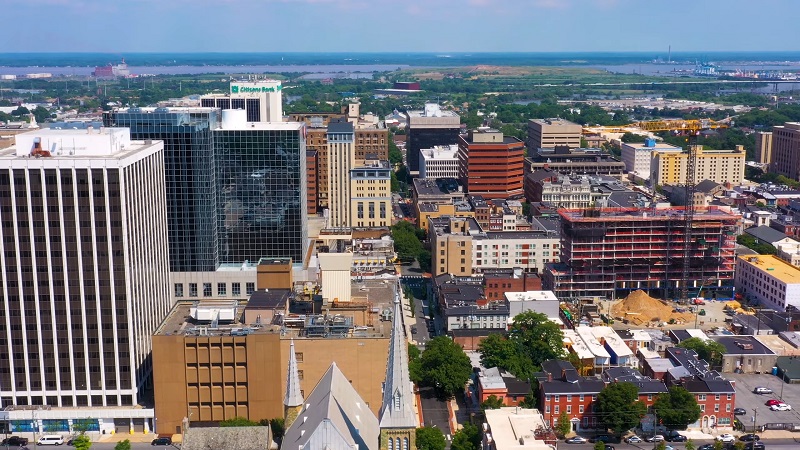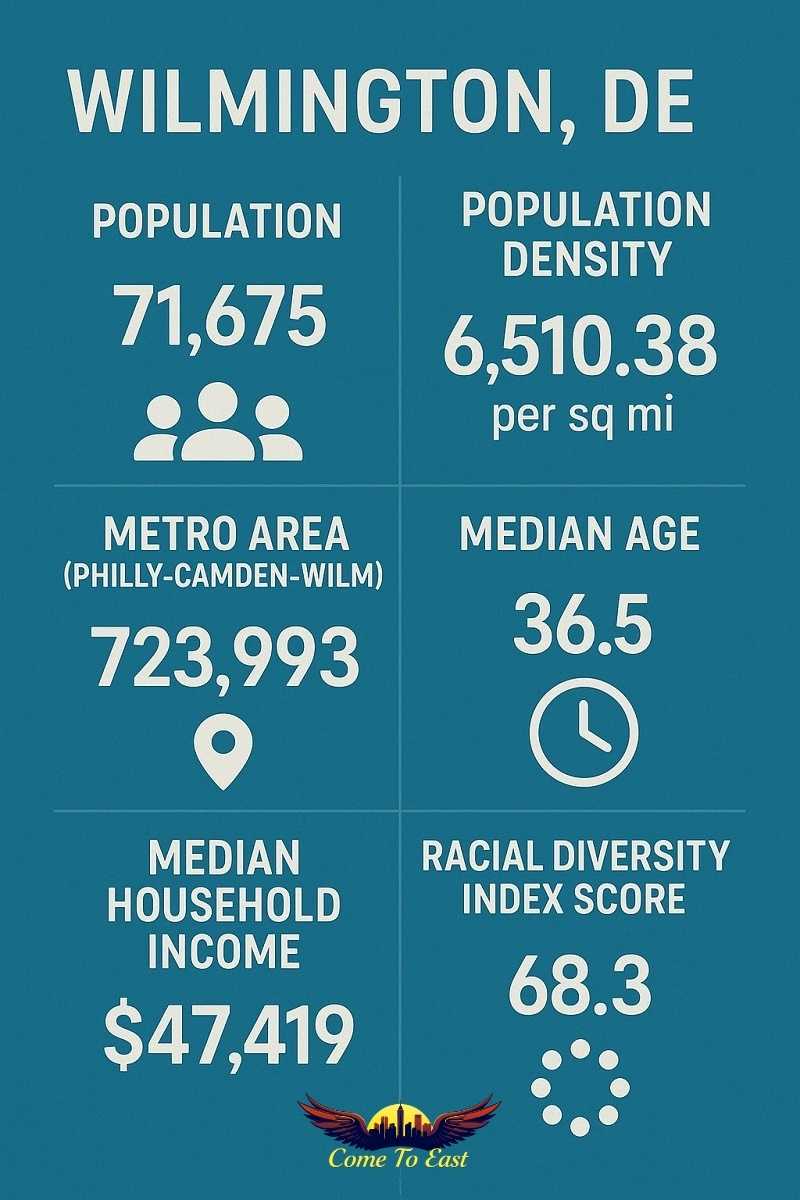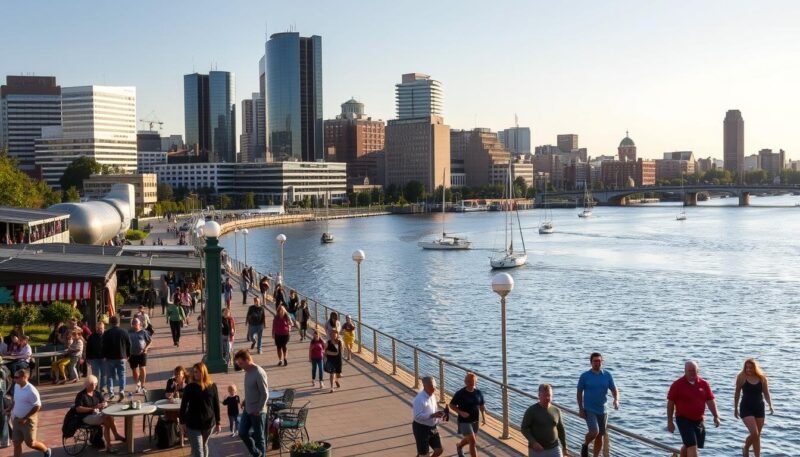Wilmington, Delaware draws attention as one of the fastest growing destinations in the United States. The city holds a prime location on the East Coast and continues to expand its economic reach. Growth in population, rising demand for housing, and consistent development projects signal a steady climb in both value and appeal.
Job opportunities attract professionals, families, and investors. Infrastructure projects and real estate momentum fuel the city’s transformation. Neighborhoods evolve. Commercial zones expand. Quality of life indicators improve.
Wilmington now offers a direct path to upward mobility, both financially and socially. A strong sense of place drives relocation decisions across many demographics. Wilmington does not rely on one factor. Its growth rests on multiple strengths that work together.
Methodology
The research for this article integrates publicly accessible and authoritative sources to ensure all information reflects the latest verified data. Demographic and population statistics, such as Wilmington’s population estimate and racial breakdown, were obtained through the U.S. Census Bureau’s Explore Data portal for Wilmington, DE. This official page offers real-time access to income, age, household, and educational statistics for the city.
Job market trends and workforce data—especially related to sector-specific growth in education, healthcare, and finance—were confirmed through the Delaware Department of Labor. ZipCode Wilmington’s placement rate and career-readiness program structure were validated directly through its <ahref=”https://zipcodewilmington.com/” target=”_new” rel=”noopener” >official website, which outlines employer partnerships and graduate success rates. Real estate trends, including the 6.4% home value increase across Wilmington neighborhoods, were gathered from Zillow’s official Wilmington Home Values page.
All sources were directly reviewed and cross-verified before inclusion to maintain integrity and accuracy throughout the article.
Wilmington, DE: Growth Patterns, Population Shifts, and National Standing

Wilmington has redefined its role in the East Coast growth map. As southern states recorded the highest national growth in 2023, Wilmington stood apart with steady momentum supported by economic, social, and geographic advantages. Data reflects real change.
Wilmington no longer sits in the shadow of larger neighbors. It contributes directly to the evolution of the broader Philadelphia-Camden-Wilmington metro zone.
Wilmington in National Context
U.S. Census updates confirm that Delaware, and Wilmington in particular, continue to record measurable gains. Although smaller in scale than the population booms in Sun Belt cities, Wilmington holds its own by combining pace with long-term sustainability.
Growth rates in Southern metro areas dominate national charts, yet Wilmington offers a different model—balanced, structured, and infrastructure-driven.
Wilmington Population Snapshot

| Category | Value |
|---|---|
| Wilmington City Population | 71,675 |
| Population Density | 6,510.38 per sq mi |
| Metro Area (Philly-Camden-Wilm) | 723,993 |
| Median Age | 36.5 |
| Median Household Income | $47,419 |
| Racial Diversity Index Score | 68.3 |
Population growth in Wilmington reflects demographic variety and balanced urban spread. Recent housing development activity has supported this trend, with city planning efforts aimed at improving livability across zones.
Wilmington Compared to Rapid-Growth Cities
Texas cities continue to dominate national growth charts. Frisco, McKinney, and Round Rock lead based on both population spikes and rising property values. They showcase expansion supported by corporate inflows, high-income residents, and massive suburban development.
Wilmington follows a different model. It does not depend on land expansion or massive housing sprawl. Instead, it focuses on dense planning, transit access, and career-oriented migration tied to the broader Mid-Atlantic economy.
Annual Growth Comparison by City and Driver
| City | Population (2019) | Annualized Growth Rate | Key Driver |
|---|---|---|---|
| Frisco, TX | 200,490 | 7.90% | Corporate HQs, top schools |
| McKinney, TX | 199,177 | 5.76% | Historic core, job growth |
| Round Rock, TX | 133,372 | 3.70% | Tech economy, Dell HQ |
| Wilmington, DE | 70,898 | 1.30% | Urban renewal, transit access |
Population Diversity and Urban Flow
Wilmington supports strong African American, Hispanic, and immigrant communities. This mix contributes to cultural vibrancy, workforce depth, and economic adaptability. Language diversity and age dispersion further highlight its growth potential.
Highlights:
- More than 55% of residents identify as African American
- Hispanic population continues to expand in West Center City and Southbridge
- Median age remains low, which supports workforce stability
- Multi-generational households contribute to housing demand patterns
Core Drivers Behind Wilmington’s Economic Growth
Wilmington moves forward with calculated purpose. Several factors now shape its progress, each reinforcing the next. Job creation, infrastructure improvements, and population gains form a foundation that strengthens year after year. Growth does not depend on one area. Wilmington shows consistent gains across workforce development, mobility, and livability.
View this post on Instagram
Expanding Career Opportunities Across Key Sectors
Wilmington’s employment landscape shifts with precision. Three sectors dominate job expansion: technology, healthcare, and finance. Professionals enter the market equipped with specialized skills, and companies meet that demand with competitive roles.
Industry Momentum:
- The Education and Health sector grew by 2.7%, marking it as one of the city’s most reliable employment channels.
- Programs such as ZipCode Wilmington serve as a direct workforce pipeline. Their 93% job placement rate reflects effective skill development in coding and software roles.
- Financial institutions continue to relocate or expand in Wilmington due to its regulatory environment and access to East Coast business corridors.
The city remains small enough for accessibility but large enough for dynamic corporate and startup operations.
Infrastructure as a Growth Catalyst
Mobility supports progress. Wilmington’s infrastructure attracts both residents and commercial investment. The state government controls nearly 85% of Delaware’s roadways, far above the national share managed by states. This centralized oversight leads to timely maintenance, planning, and upgrades.
Key Figures and Enhancements:
- Paratransit services completed 945,960 rides in FY 2019, improving access for seniors and disabled residents.
- Planned transit station improvements aim to reduce congestion and increase regional travel efficiency.
- Streetscape upgrades, new bike lanes, and expanded bus routes support daily life for workers and families.
These projects provide long-term value. Improved roads and transport connect residential zones with business hubs and cultural spaces.
Resident Growth and Urban Attractiveness
People move for stability, access, and livability. Wilmington delivers each through smart city design and growing opportunity zones. New residents bring spending power and entrepreneurial energy, especially young professionals and families seeking alternatives to larger, expensive cities.
| Category | Value |
|---|---|
| County Population | 973,764 |
| Wilmington Core City Estimate | 70,898 |
| Share of Young Professionals | Increasing |
| Median Age of New Residents | Under 38 |
Why Wilmington, DE Is on the Rise: A Leading U.S. Destination in Growth and Appeal
Wilmington steps into national focus through strong urban features, cultural access, and real estate energy. It serves as both a relocation hub and a travel stop, offering quality experiences for residents and visitors. Its identity combines historical legacy, modern development, and strategic urban planning.
Cultural and Recreational Strengths
Wilmington supports cultural engagement through museums, historic properties, theater districts, and natural trails. Each part of the city contributes to a unified visual and social experience.
Notable Attractions:
- Delaware Art Museum: Features American art and Pre-Raphaelite works
- Brandywine Park: Offers open space, scenic water views, and walking paths
- The Grand Opera House: Hosts performances, lectures, and music events
- Wilmington Riverfront: Blends shopping, dining, and outdoor events along the Christina River
Public arts programs and nonprofit foundations support active participation in the cultural scene. Events, galleries, and festivals take place year-round, keeping Wilmington both accessible and relevant.
Real Estate Momentum Across Key Neighborhoods

Real estate interest grows in Wilmington across multiple buyer profiles. Housing options range from townhouses and restored historic properties to new construction and mixed-use communities.
Market Highlights:
| Factor | Detail |
|---|---|
| Buyer Demand | Consistent growth across income brackets |
| New Developments | Active zones in Midtown and South Wilmington |
| Average Home Value Increase | 6.4% over the past 12 months (Zillow data) |
| Rental Market Activity | Strong demand near university and downtown |
Zoning updates and residential incentives contribute to movement in the real estate sector. Investors view Wilmington as a mid-scale city with long-term appreciation potential.
Wilmington Among Delaware Cities
Delaware contains several cities, yet Wilmington holds a clear lead in urban variety, access to employment, and cultural resources. It serves as a primary link between New York and Washington, while also holding its own identity through food markets, nightlife, and historic zones.
Wilmington Compared to Other Delaware Cities:
| City | Population (Est.) | Key Traits |
|---|---|---|
| Wilmington | 70,898 | Largest urban center, job and culture hub |
| Dover | 39,403 | Government seat, slower real estate cycles |
| Newark | 30,601 | College town, seasonal housing trends |
| Middletown | 25,074 | Suburban expansion, commuter housing base |

Economic Impact of Tourism in Wilmington: Business, Jobs, and Policy in Action
Wilmington’s economy receives continuous reinforcement through strategic growth in tourism, local enterprise, and public investment. Each area supports the others. Visitors bring spending. Businesses expand capacity. Policymakers support foundational systems. Together, they shape a city positioned for durable gains.
Tourism Drives Revenue and Local Engagement
Wilmington tourism produces real economic returns. Travel and event spending lifts restaurants, retail zones, hotels, and transportation services. Visitor flow increases steadily, driven by major events and citywide campaigns to showcase Wilmington’s access and amenities.
Key Metrics and Examples:
- Visitor spending in 2023 reached $258 million, with weekly averages near $5 million
- The BMW Championship drew 125,000 visitors, producing a direct $30 million impact
- Hotel bookings, food service sales, and venue revenues grew consistently quarter over quarter
Tourism helps finance improvements in public spaces, transit routes, and cultural institutions. Growth in tourism supports everyday life, not only seasonal events.
Small Business Energy and Gig Economy Expansion
Local business activity shapes Wilmington’s street-level economy. Entrepreneurs establish cafes, mobile services, and artisan brands that define commercial identity. At the same time, gig-based work options give residents flexible income sources.
Economic Highlights:
| Metric | Value |
|---|---|
| Jobs Added in New Hanover County | 1,000+ |
| Payroll Increase (Annual Total) | $110 million |
| Sector Examples | Delivery, consulting, arts |
Growth does not only rely on large employers. Independent creators and contract-based roles now form a rising share of the employment map. Wilmington supports both formal and informal work through local networks and customer demand.
Government Strategy and Targeted Investments
City and county leaders fund forward motion through specific approvals and long-range planning. Public-private partnerships play a central role. Financial commitments fuel both economic and logistical improvements.
Recent Approvals and Infrastructure Plans:
- Wilmington City Council approved $695,000 in business incentives across four firms
- County commissioners committed $1.9 million for development programs and service expansions
- The upcoming intermodal facility will remove 250,000 containers from highway trucking routes, redirecting cargo to rail and reducing road congestion

Conclusion
Wilmington stands ready for future decades. The city holds strong appeal across economic tiers and lifestyle goals. Residents build careers, raise families, and invest in neighborhoods. Decision-makers plan with vision, and results continue to reflect that clarity.
Growth remains visible. Progress remains steady. Wilmington enters the next phase with momentum few cities of its size can match.

